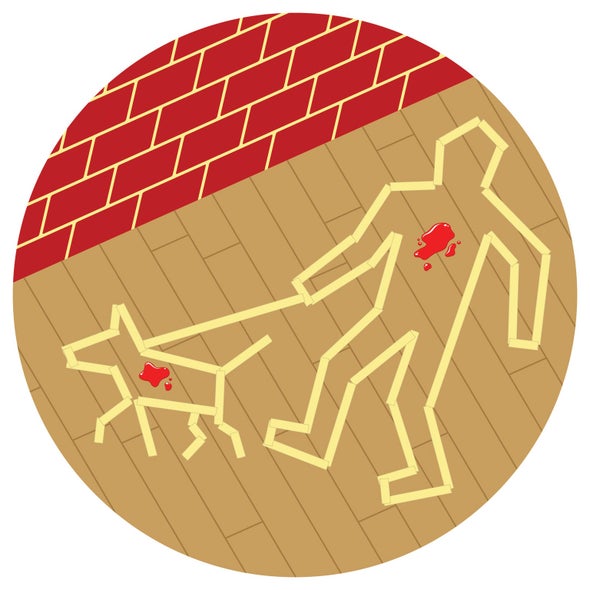How Can You Tell When Blood Is From A Animal Or Human
New Blood Analyzer Tells Human from Animal Samples on the Spot
The organization could anytime provide fast results at a crime scene

A sleepy driver on a dark road hears a loud "thump!" and later finds a speck of blood on the front bumper. Or police force spot a tiny only suspicious bloodstain at a crime scene. Chop-chop determining whether such traces come from humans or animals is crucial, but the necessary tests can be fourth dimension-consuming—and may destroy valuable evidence. Researchers say a new technique could help.
To develop a rapid, nondestructive way to place human blood, State University of New York at Albany forensic chemists Igor Lednev and Ewelina Mistek-Morabito combined spectroscopy and statistics. They shined infrared light on stale samples of human blood and on those of 10 animal species, including mutual pets such as dogs, cats and ferrets, as well as deer and elk (both of which are often struck by vehicles). The researchers recorded the reflected light, the spectrum of which changes based on claret's composition. They and so used these data to railroad train a automobile-learning algorithm to quickly and accurately distinguish human from animal sources.
"Our technique could actually help narrow down samples that are relevant to the case, before they are sent to a lab for DNA analysis," Mistek-Morabito says. Forensic scientists currently apply destructive biochemical tests for differentiating man and animal claret—and these tests sometimes return incorrect results. The new system's accuracy has all the same to be tested in the field, only Mistek-Morabito says that the initial results are encouraging.
In their study, published in Communications Chemistry, the researchers used a desktop lab instrument. Lednev is working to adjust the technology for use in a portable, handheld device. He envisions a handy, all-in-1 spectroscopic tool that could ane day characterize torso fluid traces on the spot. "Portable instruments are the future," Mistek-Morabito says. "It would help us bring the lab to the crime scene."
"The study is a proof-of-concept for a nondestructive method to analyze samples," says Academy of South Florida forensic scientist Peter Massey, who was not involved in the project. To exist of practical use in the field, the instrument must exist pocket-size, easy-to-employ and affordable, he adds.
Spectroscopy-based techniques are promising considering they can potentially exist as compact as a prison cell telephone, says Matthieu Baudelet, a forensic pharmacist at the University of Central Florida, who was as well not part of the enquiry. Simply because the car-learning process does not reveal specific physiological reasons for differences in spectra, Baudelet wonders if the results would agree up for blood from wild animals with wide-ranging diets and health.
To prepare the engineering for practical forensics, the researchers volition test and calibrate it with increasingly varied samples; Lednev is collaborating with forensic scientists from the New York State Police Crime Laboratory System to validate the technique under real crime-scene atmospheric condition.
This article was originally published with the title "In the Blood" in Scientific American 324, 5, 16 (May 2021)
doi:10.1038/scientificamerican0521-16b
Source: https://www.scientificamerican.com/article/new-blood-analyzer-tells-human-from-animal-samples-on-the-spot/
Posted by: couturesaut1950.blogspot.com

0 Response to "How Can You Tell When Blood Is From A Animal Or Human"
Post a Comment